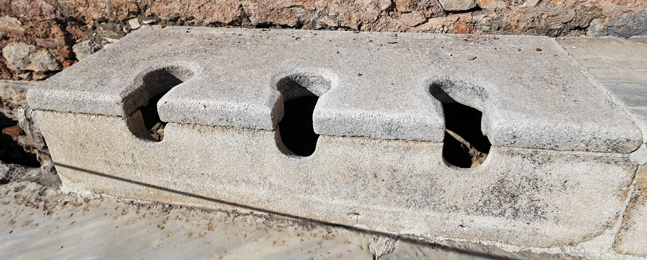The Last Word
When Nature Called

Evren Kalinbacak / Getty Images
Roman toilets in the ancient city of Ephesus (today part of western Turkey).
As ancient Rome’s population and footprint expanded in the late first century B.C.E., the city built more temples, circuses, forums and amphitheaters to keep pace with demand. It also built more public latrines.
These foricae, part of a sophisticated sanitation system, were pungent places. They were often decorated with statues and wall frescoes, maybe even a painting of Fortuna, the goddess of good luck. Indeed, luck might be the only thing that saved a forica patron from a rat bite on the bottom or a disagreement with a fellow Roman over the communal sea-sponge-on-a-stick that served as toilet paper.
Plumb the surprising realities of Rome’s sanitary engineering — brought to life by the research of archaeologist Ann Olga Koloski-Ostrow.
